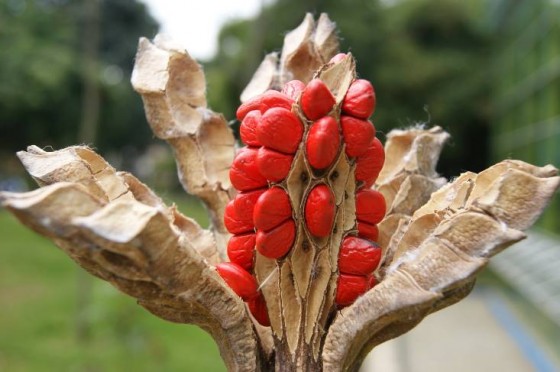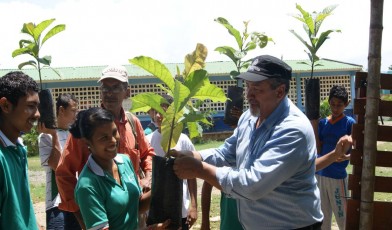Members of the magnolia family are widely appreciated as ornamental trees and shrubs due to their attractive flowers. In the wild these plants are also a source of timber, food and medicines for local communities. As well as being of scientific importance in studies of plant evolution and biogeography, magnolias may also act as indicators for the status of the forests they occur in. This is particularly important at a time of unprecedented environmental change resulting from human activities, including widespread habitat loss and global warming.
Colombia is a hotspot for magnolia diversity; where these slow growing trees are greatly valued as quality hardwood fetching high prices due to their quality and rarity. However, many of these species are located in mature primary forest and have a very restricted distribution. They are therefore at an extremely high risk from exploitation, habitat loss and forest degradation.
The GTC has been working with Jardín Botánico de Medellín Joaquín Antonio Uribe (JAUM), and Jardín Botánico Universidad Tecnológica de Pereira (UTPBG) in Colombia since 2008 to save these important species from extinction. Our work aims to raise environmental awareness of the conservation value of native magnolias, collect plant material for propagation and use in population reinforcement and carry out reintroduction programmes. To date project achievements include:
- Identification of new localities/populations in the wild
- The endemic species, M. jardinensis becoming the emblematic tree of the municipality and included in the municipality’s coat of arm in August 2009
- Development of propagation protocols, including asexual techniques
- The establishment and replication of new ex situ collections for conservation
- Community training workshops and awareness raising
- Reintroduction and population reinforcement in situ
In 2013 we started new work to survey threatened magnolias in Colombia and develop integrated ex and in situ conservation measures. This new work began in a 150 ha area of natural forest, recently acquired by JAUM. Located in the western mountains of Colombia, near the village of Dojurgos, this forest is known to host several threatened Magnoliaceae species, including Magnolia yarumalensis, M. hernandezii and M. jardinensis. Initial activities carried out at this new site included field surveys, counting and measuring individual specimens and documenting their fructification stages.

Open fruit, and seeds of Magnolia jardinensis
In July 2013 a workshop was held to bring together national conservation expertise from various organisations to exchange ideas and establish an overview of ongoing plant conservation efforts, particularly magnolias, in Colombia. A key next step for the project is to collect propagation material from genetically diverse wild populations of magnolia species and cultivate a supply of material at JAUM and UTPBG for future reintroduction efforts to rejuvenate wild populations.
